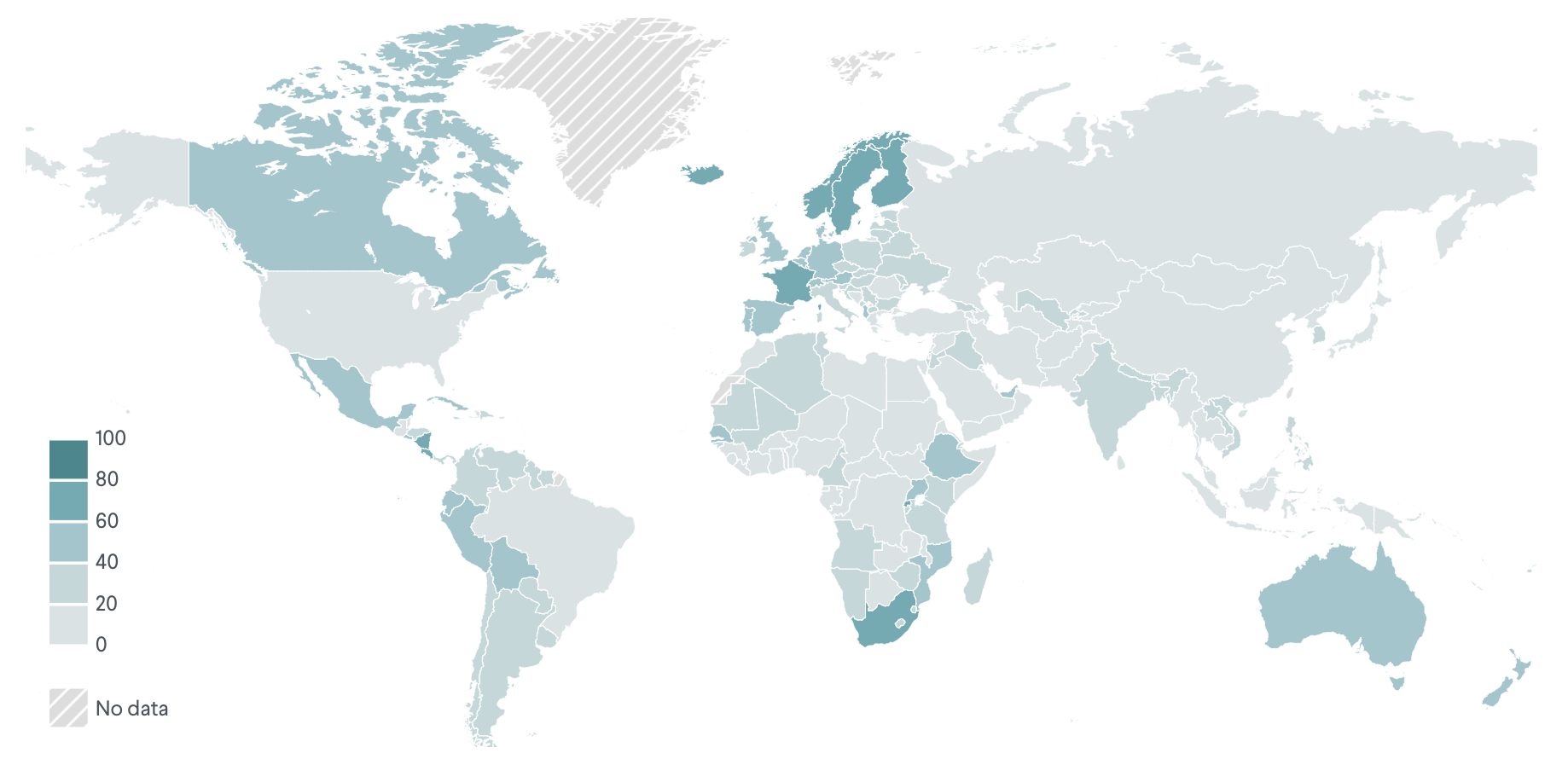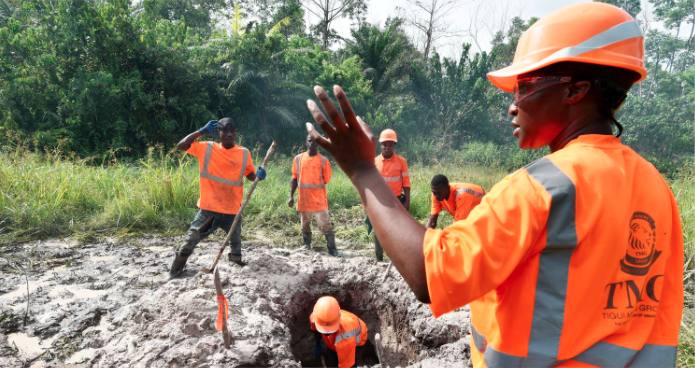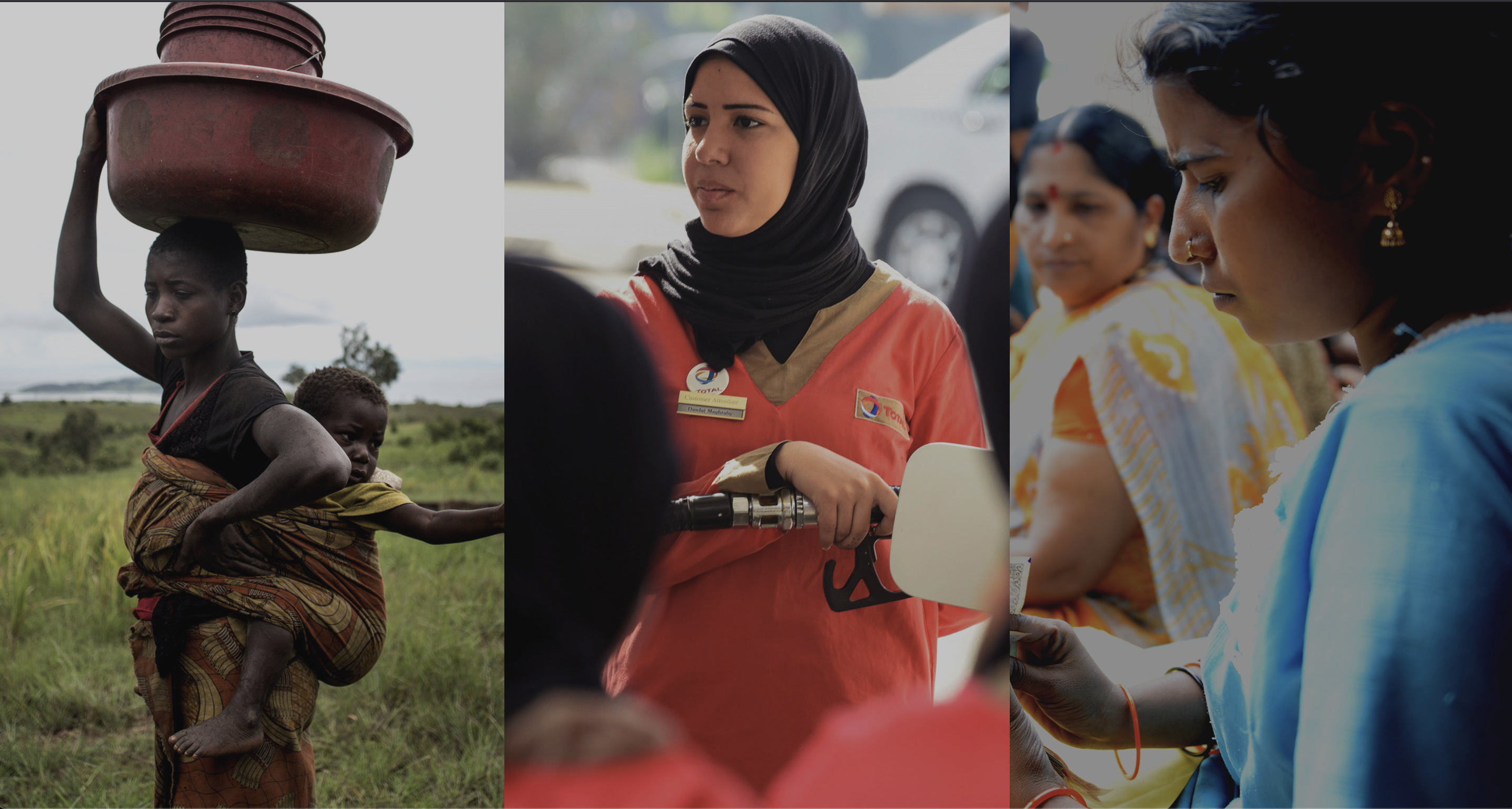Women have had few opportunities to formally participate in Sudan’s negotiations. Despite women’s integral role in Sudan’s 2018 political protests, they were mostly excluded from official negotiations during the transition process, with only one woman participating in the delegations. In 2020, they represented around 10 percent of negotiators for the Juba Agreement. Women represented two of eleven founding members (18 percent) of the Sovereignty Council of Sudan, the interim government formed in 2019 during Sudan’s three-year transition period.
For the 2018 process, women represented only 15 percent of negotiators in the Two Areas peace talks and were not represented at all on the Darfur track. All mediators for the 2018 and 2020 processes were men, although these efforts were never fully realized after the military launched a coup in 2021. Hundreds of women have participated in UN-led workshops aimed at resolving contentious issues and building support for a new process focused on transitioning the country to civilian democracy.
Sudanese female civil society leaders have worked together to relay community priorities to negotiators, provide information relevant to negotiation positions, and broaden the agenda to include issues that will help with recovery. To address intercommunal violence in Darfur, women’s groups have mediated peace treaties between tribes, nomads and farmers, and displaced and host communities. They have also called for accountability for sexual violence crimes, which are widespread across Sudan’s conflicts, and justice for those wounded or killed during protests calling for democracy.
Since its independence in 1956, Sudan has been plagued by intermittent civil wars. To the south, the 2005 Comprehensive Peace Agreement paved the way for South Sudan’s secession in 2011, which has led to its own set of complex challenges for the new country. To the west, starting in 2003, the conflict in Darfur resulted in hundreds of thousands of civilian deaths, high levels of sexual violence, widespread destruction, and the displacement of 2.6 million people, with women and girls disproportionally affected. The conflict has also continued between the Sudanese government and armed groups in Sudan’s South Kordofan and Blue Nile regions (known as the Two Areas). Government forces and allied militias targeted civilians and displaced people from farming areas, while humanitarian access was blocked. Numerous attempts to resolve the conflicts failed, including the 2006 Darfur Peace Agreement, the 2011 Doha Document for Peace in Darfur, and the 2011 Agreement on the Two Areas. In 2014, the African Union Peace and Security Council launched a “two-track-one-process approach”—bringing parallel negotiations on Darfur and the Two Areas under one umbrella.
In December 2018, pro-democracy protests spread throughout Sudan with women on the front lines of demonstrations, making up 70 percent of protesters according to some estimates. The revolution resulted in the overthrow of former President Omar al-Bashir in a military coup d’état in April 2019. In August 2019, the Transitional Military Council and the Forces of Freedom and Change (FFC) coalition signed a draft Constitutional Declaration that set out a thirty-nine-month transitional period to democratic civilian rule, with elections scheduled for 2023. The first rounds of negotiations took place in Juba, South Sudan, in September 2019 following the transfer of power from the Transitional Military Council to the Sovereignty Council of Sudan, of which two of eleven members are women (18 percent). In 2020, the Sudanese government reached the Juba Agreement with most, but not all, of the armed movements in Darfur to the west and South Kordofan and Blue Nile to the south.
The agreement broke down in 2021, however, when military leaders halted the country’s transition to civilian rule and staged a second coup d’état on October 21. The civilian government was dissolved, and a new authoritarian government was put in place under Lieutenant General Abdel Fattah Al-Burhan. The coup was widely condemned, including by the African Union, the European Union, and the UN, and mass protests broke out across the country, driven in large part by women. Months of protests and violent conflict ensued, which saw scores of civilians, including human rights activists, killed. In response to pressure, the military and FFC leaders signed a new framework agreement in December 2022 that outlines a transitional process leading to the election of a civilian head of state who is also the head of the armed forces. Phase II discussions aimed at resolving a range of contentious issues commenced, and on January 8 the UN announced that it would facilitate discussions involving diverse groups of Sudanese stakeholders—including women—aimed at building support for the process. However, armed conflict again broke out in Khartoum in April 2023 between the Sudanese military and the paramilitary Rapid Support Forces who are vying for power. Scores of civilians have been injured or killed and the violence is threatening to engulf the region.
Despite their contributions to peace-building efforts, Sudanese women have had few opportunities to participate in the peace process. Sudanese women accounted for up to 70 percent of the protestors that helped topple Sudan’s Omar al-Bashir, and the viral image of student Alaa Salah as she led protestors in chant, became the face of the revolution. Women also played a leading role in the protests that led to the resignation of Lieutenant General Abdel Fattah al-Burhan, who took power following the October 2021 coup. In 2020, although women civil society leaders traveled to Juba to advocate during the negotiations for the Juba Agreement, Sudanese women represented only around 10 percent of negotiators, according to UN sources—despite a commitment to women’s political participation in Sudan’s new transitional constitution, which promised 40 percent of parliamentary seats to women.
In the “two-track-one-process approach” launched in 2014, certain rounds of talks found women represented as three of twenty negotiators (15 percent) for the Two Areas track and absent from the Darfur track (in addition, all three of the African Union mediators were male). The four official civil society observers during the 2016 negotiations on the Two Areas and Darfur were all women representing the Taskforce on the Engagement of Women (the “Women’s Taskforce”), formed in 2013 by Sudanese female civil society and political leaders to provide a channel to the peace process. Women were also underrepresented in previous rounds of talks, including the 2006 Darfur Peace Agreement, for which only 8 percent of negotiators were women. Although excluded from formal talks, Sudanese female civil society leaders have been active in supporting the peace processes: they have relayed community priorities to negotiators, provided information relevant to negotiation positions, and broadened the agenda to include issues that will help with conflict recovery.
- Women
- Men
women
women
Women have made a difference in Sudan’s peace efforts through their grassroots efforts and official negotiating roles.
Keep pressure on return to civilian rule. Women have played a powerful role in calling for an end to authoritarian rule and encouraging the restoration of negotiations focused on establishing civilian governance. The International Criminal Court prosecutor for Sudan told the UN Security Council that the “fact that” the negotiations leading to the resumption of the current political dialogue “have happened at all is a testament to the Sudanese women, men, and youth who have persistently and courageously taken to the streets to demand their rights and to call for civilian rule, despite facing violence at the hands of Sudanese security forces.”
Work across lines. One network of Sudanese women leaders—the Women’s Taskforce— includes Sudanese civil society activists and political party leaders who unite across religious, ethnic, and regional divides to advance shared priorities. They formed the taskforce in response to the “lack of community and specifically women’s voices in the process—the human element.”
Act as honest brokers. Because of their transparency and relationships with communities in conflict-affected areas, Women’s Taskforce members are considered honest brokers with whom the government, political parties, and armed groups can consult and share information. As observers in the August 2016 talks, Women’s Taskforce members served as informal mediators and urged negotiators to continue to participate in the process.
Access critical information. Because women tend to have different social roles and responsibilities than men, they often have access to information and community networks that can improve negotiating positions and highlight potential areas of agreement. Women’s Taskforce members conduct regular community consultations to provide feedback to negotiators and relay information on the negotiations back to communities. For example, in 2017, when Women’s Taskforce members met with the head of the Sudan People’s Liberation Movement-North, Yasir Arman, they relayed current priorities of local communities in the Two Areas and advocated that talks should not be delayed over humanitarian access. In 2006, when negotiations in Darfur deadlocked over control of a particular river, local women advised the male negotiators—who were rebel group leaders living in the diaspora—that the river in question had dried up several years prior.
Broaden the agenda. In the Two Areas talks, women encouraged the negotiators to address access to education to ensure that communities are able to build a stable future. In previous rounds of Darfur negotiations, women delegates recommended the inclusion of provisions on food security, protection for internally displaced persons and refugees, and the prevention of gender-based violence, all of which advance long-term stability.
Broker local deals. In Darfur, over seventy women’s associations lead efforts to resolve tribal conflicts, including a network of women from different tribes who mediate disputes between local authorities and tribal leaders. These women have mediated peace treaties between tribes, nomads and farmers, and displaced and host communities, thereby improving local-level security.
“When women were sitting in Abuja, they completely changed the process... because it was practical... The men were positioning who was going to be the president, who was going to be the vice president, and the women were saying, ‘When will my children get food? When will my relatives get water?’ It changed the dynamics.”
— Mobina Jaffer, former Canadian Special Envoy to the Sudan Peace Process






